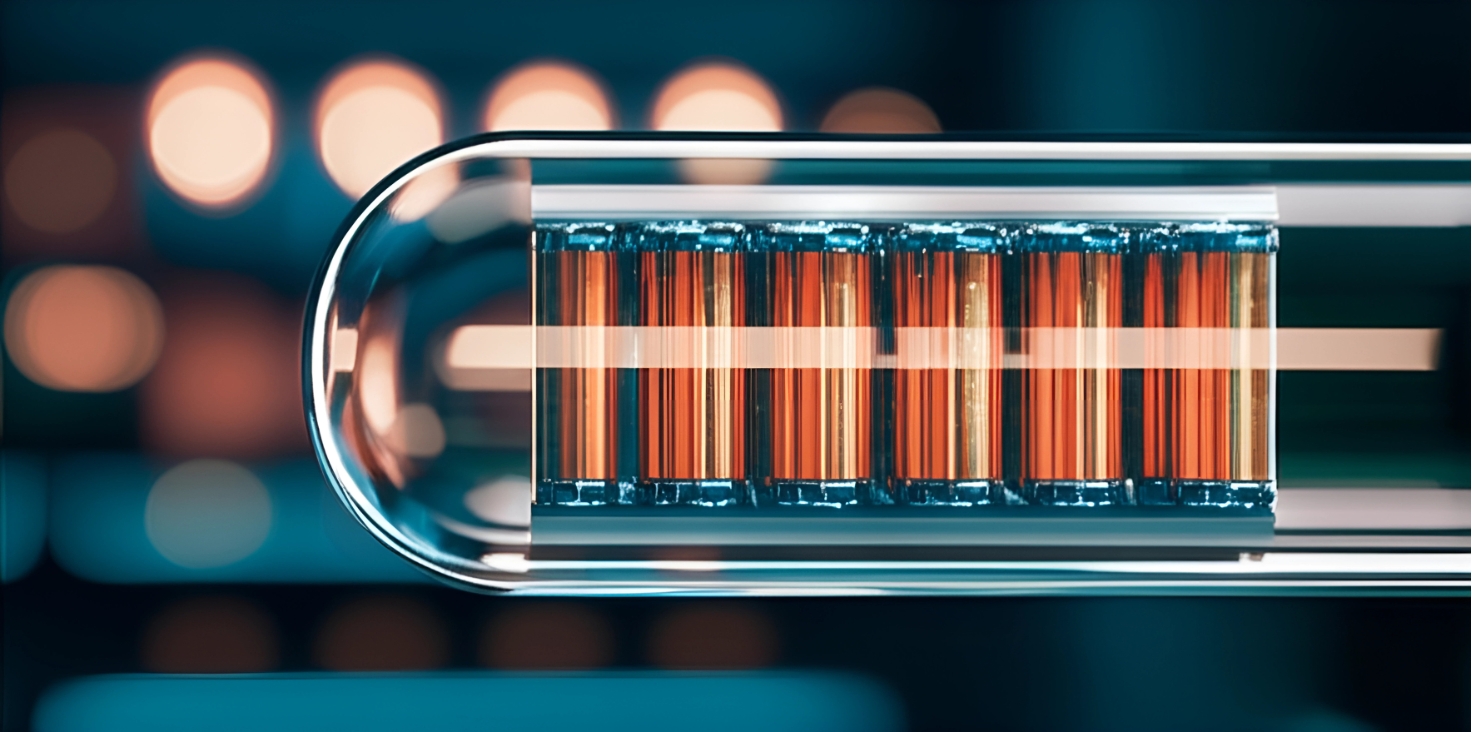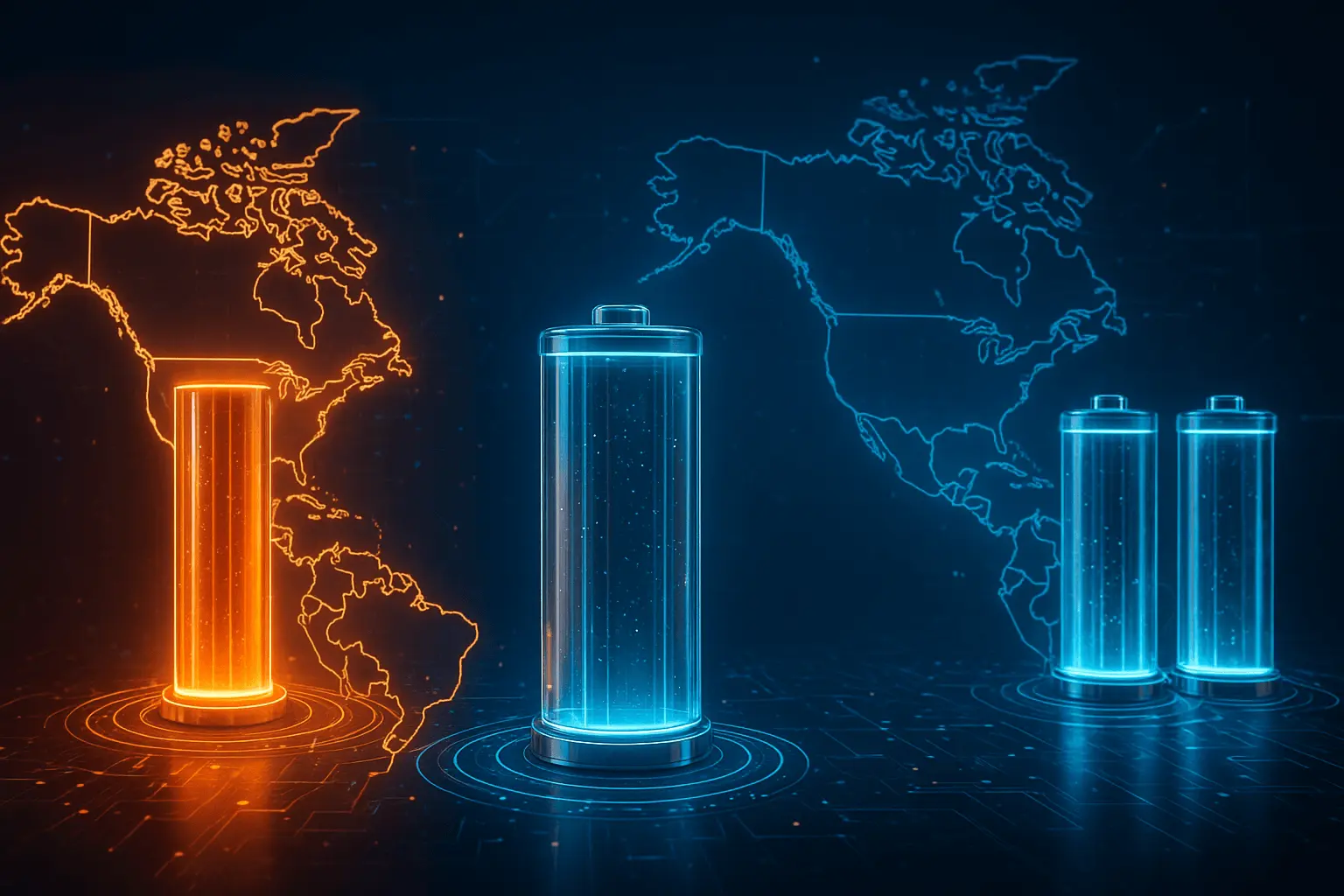
Solid-State Batteries: Just another fad or a revolutionary paradigm shift?
- August 2, 2025
Executive Summary
- 60%+ performance leap in energy density creates paradigm shift opportunity
- Three strategic paths emerging: The Paradigm Shifters, The Manufacturing Innovators, The Strategic Orchestrators
- Chinese manufacturers rapidly securing IP and production capabilities while Western companies deliberate
The Strategic Crossroads
Every leader in the automotive and battery industries faces the same critical question today: Should we bet on solid-state batteries now, or double down on optimizing current lithium-ion technology?
The global race toward decarbonization, EV adoption, and renewable integration has stretched the limits of traditional lithium-ion technology. Enter solid-state batteries—a fundamentally safer and more energy-dense alternative. With companies like Toyota, QuantumScape, and CATL accelerating development, 2025 marks a shift from hype to industrialization.
In 2024, global sales of electric vehicles (EVs) reached 17.1 million units, a 25% increase compared to the previous year. This figure represents more than 20% of all new car sales worldwide. This is not an incremental update. With this irreversible and major shift, the battery technology decisions made now will define the next generation of market leaders.
The window for strategic positioning is rapidly closing.
Time to decide the adoption is now
Solid-state batteries (SSBs) represent a potential paradigm shift. The core advantages are too significant to ignore:
- Radical Performance Leap: Early prototypes are achieving 375–450 Wh/kg energy density—a 60%+ improvement over today’s top lithium-ion cells (~250 Wh/kg). This translates directly to longer-range vehicles or lighter, more efficient designs.
- Speed and Safety: With sub-20-minute charging and an inherently safer design that eliminates flammable liquid electrolytes, SSBs solve the two biggest remaining hurdles to mass EV adoption.
This potential is forcing the industry to choose a strategic path.
Three Dominant Strategic Positions
The industry has crystallized around three distinct strategies. The right choice depends entirely on a company’s market position, brand identity, and capital strategy.
1. The Paradigm Shifters: Engineering the Future Standard
The Strategy: Pursue breakthrough solid-state architectures—particularly advanced solid electrolyte systems like sulfides, oxides, or novel polymers—designed to fundamentally redefine battery performance ceilings and establish new industry benchmarks.
Champions: Companies with deep R&D heritage and brand equity built on technological leadership, such as Toyota, alongside well-capitalized technology pioneers like QuantumScape that can sustain extended development cycles.
Core Logic: These players are positioning to capture the entire value chain transformation by owning the defining technology of the next battery era. They’re betting that superior performance will create such compelling value propositions that customers will pay premiums and competitors will be forced to license or follow. Success means becoming the Intel or TSMC of solid-state batteries—setting standards that others must adopt. This is a high-risk, high-reward gamble.
2. The Manufacturing Innovators: Production-Led Disruption
The Strategy: Develop solid-state technologies specifically designed for rapid scaling through existing or evolutionarily-modified manufacturing infrastructure, prioritizing speed-to-volume over theoretical performance limits.
Champions: Technology developers like Solid Power and Samsung SDI whose approaches emphasize manufacturability, alongside CATL with their condensed battery technology. Strategic OEMs like BMW and Ford select these partners specifically for their production-compatible approaches.
Core Logic: These companies are betting that manufacturing excellence and market timing will prove more valuable than pure technological superiority. They’re positioning to dominate the critical 5-10 year transition window while building the production knowledge and supply chain relationships that will be essential for any solid-state future. They view early market control as the foundation for long-term technological leadership.
3. The Strategic Orchestrators: Building Technology Sovereignty
The Strategy: Maximize current lithium-ion capabilities while simultaneously building comprehensive optionality across multiple solid-state pathways through strategic investments, partnerships, and internal R&D programs.
Champions: Established automakers like Mercedes-Benz, Hyundai, and Stellantis who maintain multiple SSB partnerships while heavily investing in advanced lithium-ion technologies. BYD exemplifies this approach by dominating LFP markets while building SSB research capabilities.
Core Logic: These players are constructing a portfolio approach that positions them to rapidly capitalize on whichever solid-state pathway proves commercially viable, while extracting maximum value from existing technology investments. Rather than picking early winners, they’re positioning to acquire, partner, or internally scale the most promising approaches once market validation occurs.
The Global Competitive Context
While Western automakers deliberate, Chinese manufacturers are rapidly securing solid-state battery IP and advancing pilot-scale production lines. This is not just a race for better technology; it’s a strategic push to control the manufacturing know-how and critical supply chains that will underpin the next era of mobility.
Not without challenges
Despite strong lab performance, SSBs face steep manufacturing and materials challenges:
- Interface instability and dendrite growth remain technical bottlenecks.
- Dry processing and sintering of solid electrolytes require new giga-scale methods.
- Cost per kWh is still higher than mature LFP cells.
But the progress is real. Toyota claims readiness for mass production by 2027, while BMW, Ford, and Hyundai have pilot projects underway.
Questions to Define Your Strategic Position
No matter who you are in the value chain – Auto OEMs, Battery makers, Investors, Policymakers – you are a participant in this change and it will impact you, whether you decide to act or not. The path you choose must be a deliberate one. Every leadership team should be asking:
- What is our core brand identity? Are we Paradigm Shifters, Manufacturing Innovators, or the Strategic Orchestrators
- What does our target market value most? Are they early adopters willing to pay for peak performance, or do they prioritize proven reliability and value?
- What is our capacity for capital-intensive transformation? Can we support a ground-up manufacturing evolution, or must we leverage existing assets?
- Is partnership a capability or a necessity? The complexity of SSBs makes ecosystem development critical. Who are your essential partners, and have you secured them?
- What is the cost to wait and watch? The rapidly changing technical landscape, coupled with heightened patenting activity, will create new winners. Would the barriers to entry due to IP protection or regulatory challenges be too high to compete in few years?
- Why should you be concerned as a policymaker? Absence of a pan world regulatory framework on SSBs may create voids that could prove challenging for creating a global ecosystem that will foster sustainable innovation. What should be done today to progress towards a sustainable future?
The answers to these questions will point toward your most viable strategic path.
Your Next Decision
The solid-state transition is underway—and inaction is, in itself, a strategic decision. The companies that will lead the next decade are those that choose their position deliberately and execute with conviction.
The critical question is no longer if solid-state batteries will arrive, but whether your organization will lead or follow when they do.
Share this Event
- All Posts
- Artificial Intelligence
- Automotive Industry
- Battery Technology
- Corporate Strategy
- Energy
- Energy Storage
- Healthcare
- Materials Science
- Medical Innovation
- Regional Strategy
- Technology

